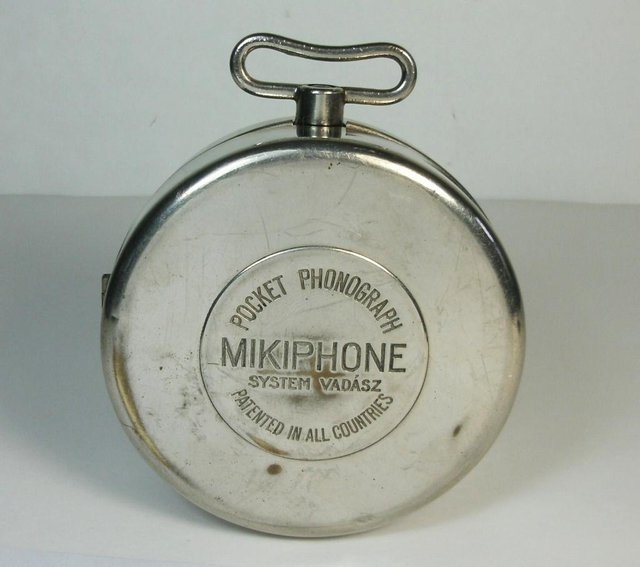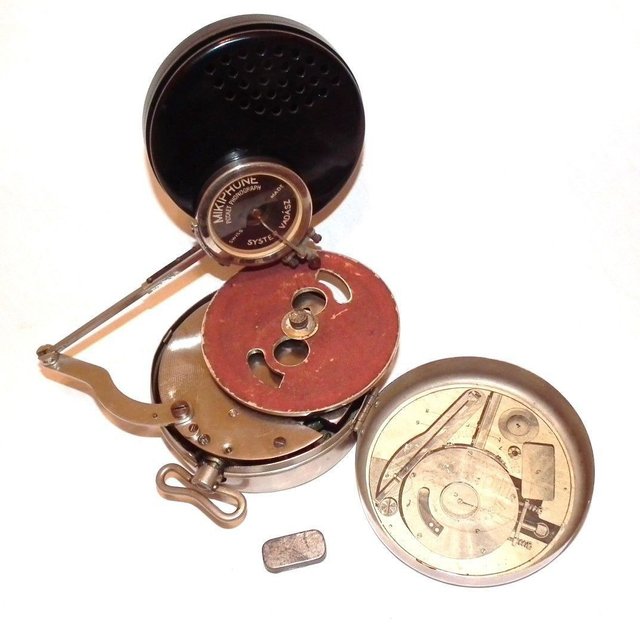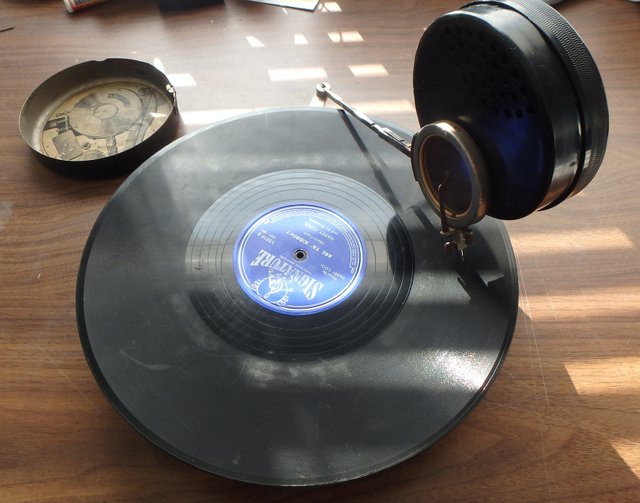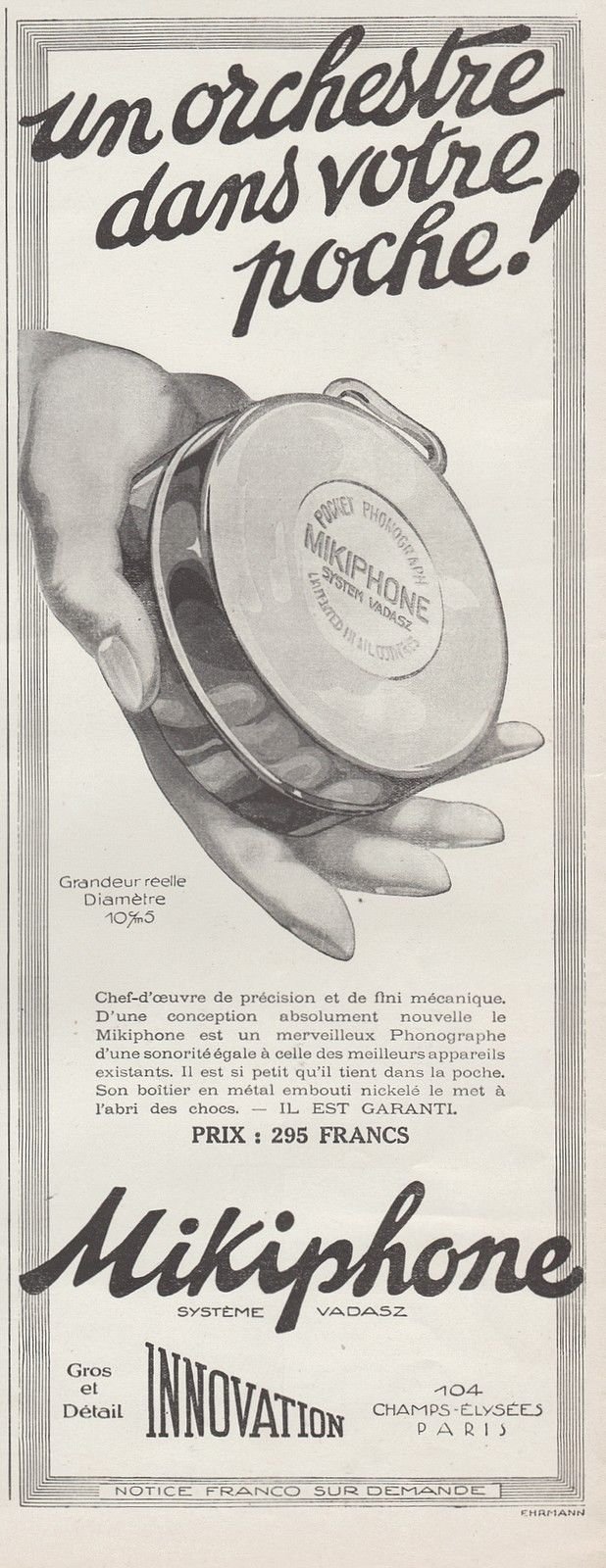The Magnificent Miniature Mikiphone

It looks like a slightly over-sized hockey puck or a maybe a round hunk of cheese in a metal container. A closer inspection reveals a windup key on its side, like something from a clockwork toy. But what is it?
I’ve brought the enigmatic device to a dinner party for ‘show-and-tell’ and lay it on the table along with a five-dollar bill. Whoever first guesses its true purpose wins the money!
I wind the key up a dozen times. Now it’s obvious that it’s something mechanical. I open the lid of the can and reveal its contents. Inside, there are a half dozen oddly-shaped pieces. There are a couple of celluloid canister halves. I join them together and attach another gadget that contains a small diaphragm. This assembly now joins to a jointed metal arm which is fitted onto the main contraption. A holed disk goes on to a central spindle.

The people’s guesses keep coming: giant watch? alarm clock? A sewing machine? I finish the last step by inserting a sharp metal needle into its holder in the resonator. Someone guesses that it might be a sound producing device.
From my bag, I pull out a 10” shellac disk and fit the record on the spindle. I move the tone arm over and drop the needle on to the record. The disk begins to spin and out pours the somewhat tinny but otherwise glorious sound of Glenn Miller’s ‘Moonlight Serenade.’ There are ‘oohs’ and ‘aahs’ and sounds of delight as the truth is revealed. It’s a miniature, fully functional record player that requires no electricity!
The Mikiphone was invented in 1924 in Switzerland by the Vadász brothers. It was designed to be the smallest, most portable record player ever made. The canister is just over 4” in diameter and weighs about 2 pounds. Most had a nickeled metal casing but a few luxury version cases were made of gold and silver. About 180,000 units were produced in a couple of years of production.

The simple design was intended to resemble a large pocket watch. The turntable is driven by a wind-up triple spring and its speed is governed by spinning weights. The needle is mechanically vibrated by the grooves in a 78 rpm record and the sound is amplified by the diaphragm and resonator right at the point of contact. There is no electrical amplifier. It’s surprising loud for its size.
It was no surprise that one of the older party guests guessed ‘record player’ first. Most of the younger folks had no experience at all with the needle-driven sound machine, having grown up with CD’s and digital media. But with a touch of irony, this totally portable device was a precursor to the Walkman and the Iphone.
Used Mikiphones can be found regularly on Ebay and elsewhere selling from $200 for one in rough condition to as much as $1000 or more for a mint condition model. If you can find one in undented, original condition, with the original needle tin, packing box, instruction booklet, and optional leather case, it could be worth as much as $2000 or more. Watch out for copies: the Japanese made one called the Mikky Phone in the 20th century and even now, India is making reproductions for about $200.00.

If you’re looking for a unique and collectible conversation piece or maybe just need some portable music for your next romantic picnic, consider the marvelous Mikiphone!
See the Mikiphone in action: